QuestionI have several small dogs from small puppy to a 10 yr. old 8# yorkie. Except for puppy they are all spayed. They are all loving pets that don't get much exercise. I would like to know the best dogfoods to feed them for their appropriate ages. They are all females. Right now I have my puppy, 6 months old (2 1/2#) on Royal Canin puppy(#33); I have the rest of them ranging from 2 years to 10 years old on Taste of the Wild foul & Taste of the Wild fish. I have concerns that these dogfoods are more for larger, active dogs & may not be appropriate for my small dogs. Would you recommend another brand that would be better for them & if so what? Can you give a healthy dog too much protein if they are inactive? I would appreciate your help.
AnswerYou are right to be concerned about an excess protein level. The excess protein is burned as energy producing more urea for the kidneys to filter out. No sense burdening them more than you have to. What is really best is a lower total protein with the correct ratios of amino acids. I would put the whole bunch of them including the puppy, on Pro Plan Adult chicken and rice or something similar. It has 26% protein. The puppy should have completed its growth and at worst, the less rich diet will only slow growth. It is the best practice for large breed puppies to switch them to adult chow at 4 months, so it shouldn't hurt a small puppy at 10 months. There are some small breed specific chows that you might look at too. Make any switches gradually over a week to avoid digestive upsets. It may still take a few more weeks to settle down after the switch.
There isn't any real information available on how well dogs do on different diets. I have seen good and bad reports on virtually ever brand of chow there is. I know the large service dog programs are very successful feeding common chows such as the Pro Plan, Iams, Science Diet, etc. That includes small breeds serving as hearing assistance dogs.
What is well documented is that lean dogs are healthier than overweight ones. Your dog definitely should be narrower at the waist than the hips and chest. You should be able to easily feel the ribs, but not see them. Each dog is different. Standard recommendations are a good place to start, but each dog must have its food and exercise adjusted to its individual needs. Here is a link to a good illustrated guide, http://www.longliveyourdog.com/twoplus/RateYourDog.aspx

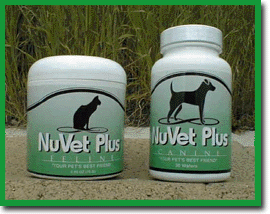 Salmon oil vitamin supplements
QuestionQUESTION: I have 3 dogs...50lb mutt, 80lb gsd a
Salmon oil vitamin supplements
QuestionQUESTION: I have 3 dogs...50lb mutt, 80lb gsd a
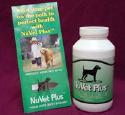 recipes for kidney failure canine ; canine renal recipes ; canine supplements ;
QuestionHi there. I ran across this website while doing
recipes for kidney failure canine ; canine renal recipes ; canine supplements ;
QuestionHi there. I ran across this website while doing
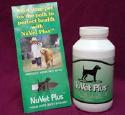 dog food for pom/chis
Questioni have a 1.4 yr old pom chi and a 8.5 month old
dog food for pom/chis
Questioni have a 1.4 yr old pom chi and a 8.5 month old
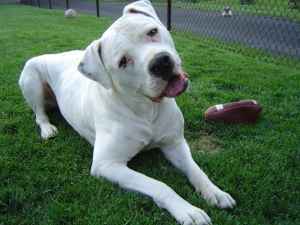 NuVET Pet Wafers will Explode your pitbulls muscle mass....:
QuestionHi Marie my dog had puppies on February the 19t
NuVET Pet Wafers will Explode your pitbulls muscle mass....:
QuestionHi Marie my dog had puppies on February the 19t
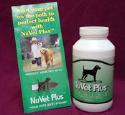 Pug with skin problems; pugs and yeast bacteria ;
QuestionL have 3 adorable pugs: Max, Gypsy and Chico. M
Pug with skin problems; pugs and yeast bacteria ;
QuestionL have 3 adorable pugs: Max, Gypsy and Chico. M